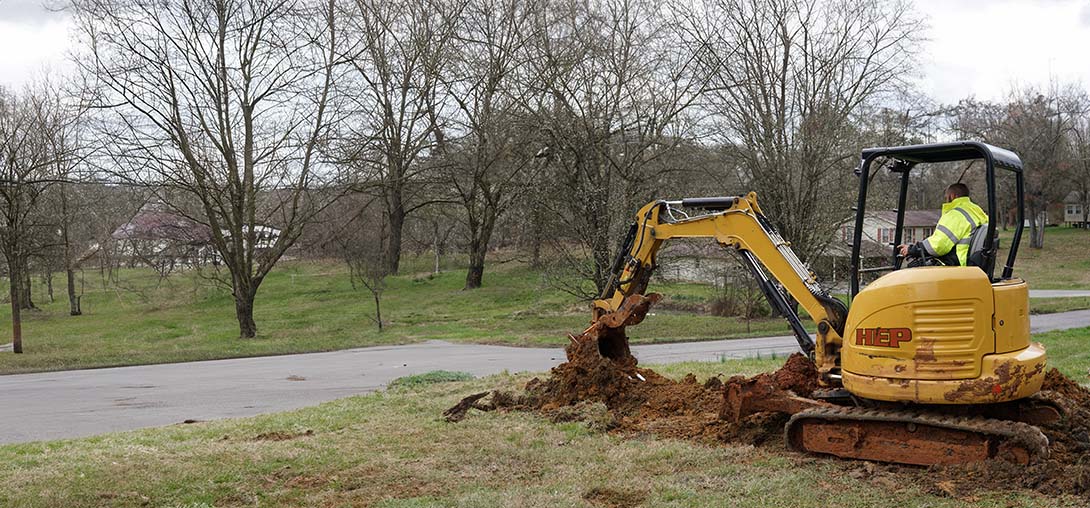- HEP
- Tree Root Intrusion

 Tree Root Intrusion
Tree Root Intrusion
Tree Root Intrusion | Main Line Issues | Plumbing | Sunbright
Tree roots love moisture, and few places offer a tastier drink than the pipes running beneath your Sunbright home. When thirsty limbs snake into those buried lines, you can find yourself facing slow drains, foul odors, gurgling toilets, or even a full-blown sewage backup. HEP’s specialized team uses state-of-the-art cameras to pinpoint the invasion, then clears, repairs, or replaces damaged sections so your water flows freely again. We arrive fast, explain every step, and leave your yard looking just as neat as we found it—only with healthier pipes underneath.
Whether you’re already ankle-deep in wastewater or simply worried about recurring main line issues, our licensed plumbers are on call 24/7. From hydro-jetting stubborn root masses to installing root-resistant pipe liners, we provide long-term solutions backed by industry-leading warranties and a satisfaction guarantee. Reach out today and let HEP safeguard your Sunbright sewer system before small roots grow into big headaches.
FAQs
What are the most common warning signs of tree-root intrusion in my Sunbright home’s main sewer line?
Slow-draining fixtures throughout the house, frequent gurgling noises, water backing up in lower-level drains, unexplained wet spots in the yard, and foul odors near clean-outs or the lawn are the top indicators. Because Sunbright sits in a heavily wooded area with clay soils that hold moisture, roots are especially aggressive in seeking the condensation that forms on older clay, Orangeburg, or cast-iron pipes.
How do tree roots actually get inside a buried sewer line?
Sewer pipes are not completely airtight. Over time, tiny gaps develop at pipe joints, cracks, or poorly sealed connections. Warm, nutrient-rich vapor escapes and attracts roots. Fine root hairs work their way through hairline openings, then grow thicker as they tap into the water and organic matter flowing through the pipe. In Sunbright’s long growing season, roots can expand several feet inside a main line in just a few months.
Can I prevent root intrusion, or is it inevitable in a wooded area like Sunbright?
Prevention is possible. First, know the location of your service line before planting trees or large shrubs; keep deep-rooted species (maple, sweetgum, oak) at least 15–20 ft away. Second, schedule a camera inspection every 3–5 years; early detection lets plumbers apply root-killing foam or copper sulfate before major damage occurs. Third, if your home still has clay or Orangeburg piping, consider trenchless pipe lining or PVC replacement; modern, seamless materials are far more resistant to root entry.
What professional methods are used to remove roots and restore flow?
Plumbers typically begin with a high-resolution sewer camera to pinpoint the blockage. Depending on severity they may use: • Mechanical rodding or a root-cutting auger to shave away growth. • Hydro-jetting (4,000 psi water) to scour the pipe walls clean. • Foaming herbicides that kill remaining root tips without harming the tree. • Trenchless solutions such as cured-in-place pipe (CIPP) lining to create a smooth, joint-free inner sleeve that roots cannot penetrate again. The right choice depends on pipe material, depth, and the size of the intrusion.
Will my homeowners insurance cover repairs for root-related sewer damage?
Most standard policies in Tennessee consider tree-root intrusion a maintenance issue and exclude it from coverage. However, some insurers offer a “service line endorsement” that specifically covers buried water, sewer, and drain lines. Premiums are usually modest—often $30–$50 a year—and can save thousands in repair costs. Check your policy or ask your agent about adding this protection if your property in Sunbright has mature trees.
How much does it cost to fix a root-blocked main line in Sunbright, and how long will my plumbing be out of service?
Basic root cutting and hydro-jetting typically range from $350 to $650. If a trenchless liner is needed, expect $75–$120 per linear foot, averaging $3,000–$6,000 for a typical 40- to 60-ft residential service line. Complete pipe replacement that requires excavation can run $6,000–$12,000 depending on depth, soil conditions, and driveway or landscaping restoration. Most maintenance cleanouts take 1–3 hours, while trenchless lining is usually finished the same day. Full replacement may sideline your sewer service for 1–2 days, but reputable local plumbers arrange temporary bypass pumping to keep household disruption minimal.